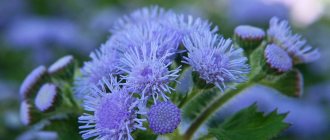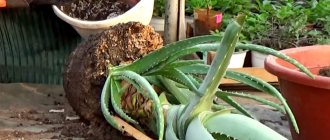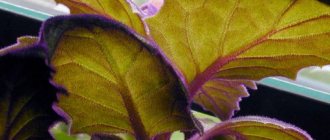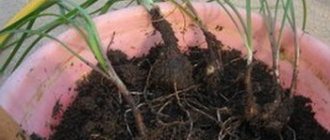Peculiarities
Succulents are plants with succulent leaves and stems; they belong to different families:
- Euphorbiaceae
- Cactaceae
- Liliaceae
- Crassulaceae
- Lastovnevye
- Aizoonaceae
- Kutrovye
- Agave
They are united by the same growth conditions
They prefer dry areas such as deserts. Succulents can also be found in roadside dust. They do not like excess moisture and rainy weather. She ruins them.
For many, it is enough to water twice a year. They make a reserve that is enough for full development. The leaves of the plant are covered with bloom. It performs a protective function from the scorching sun, protecting the leaves from burns.
The plant is native to the deserts of Africa, as well as the American continent. In Europe, for example, caustic sedum is also found in nature.
Why do you need to replant succulents?
For what cases is it necessary to replant succulent plants, and when can you do without it? Experienced gardeners recommend replanting young succulents every year, and replanting adult specimens once every three to four years.
Unless necessary, it is better not to replant the flower frequently, since the roots of succulents are fragile, and the replanting itself is a lot of stress for the plants. At first, the transplanted plant may have a sick, stunted appearance, and leaves may fall off. After some time, the flower returns to normal.
Important! The optimal time of year for a planned transplant is spring. It is in the spring that active plant growth is observed. Transplanting succulents in autumn and winter is possible, but in exceptional cases.
Cases when it is necessary to replant a succulent flower:
- It is advisable to transplant the plant into a suitable size pot after purchasing it in a store.
- A transplant is needed if the flower becomes cramped in the old pot.
- The need for replanting appears in case of acidification or deterioration of the soil.
- Diseases of the plant's root system can also be a reason for replanting.
- Moisture stagnates after watering.
- The pot does not have drainage holes or a drainage layer.
Immediate replanting is required in cases where the pot cracks or breaks under the weight of the plant. In such emergency situations, there is no point in postponing the transplant.
Care
Each type of succulent has its own rules for care.
However, there are general rules that must be followed when growing them at home.
Lighting
Lots of light is the most important condition for these plants.
They can easily withstand the scorching sun and thrive on south-facing windows. If it is impossible to meet these conditions, there is no need to breed them at home. Or provide artificial lighting.
There are varieties that can tolerate shade.
The most common of them:
- Schlumberger
- Sansenvieria
- Crassula
For these succulents, the lack of light slows down development. Because of the shade, their health weakens, they are more often attacked by pests and various diseases.
Tolerance to poor lighting is determined by color. Such plants have dark green leaves and trunks.
All species do not like sudden changes in living conditions. After the winter months, they need to be gradually accustomed to light. Otherwise, burns will appear on the leaves in the form of red spots.
Watering
Succulents require minimal watering. They will suffer from excess moisture, even to the point of death. Under natural conditions, a powerful root system is nourished by moisture extracted from the ground; in small pots this possibility is not available.
There is no need to spray the plants. Dry air is healthier for them than humid air.
Watering is stopped on rainy days and in winter. During the winter they can be watered no more than 2 times. The water should be at room temperature. Soft and settled is best.
Fertilizers
You need to fertilize once a month
Fertilizers with a high content of potassium and phosphorus are preferred. But there should be little nitrogen in them; its excess can only do harm. When fertilizing the soil, you need to follow the rule: it is better to underfeed than to overfeed.
Nitrogen makes the plant loose and watery. Many children appear, but they do not develop. The skin of the flower bursts, the wounds begin to rot. All this leads to the death of the succulent.
Temperature
In summer, flowers must be kept at high temperatures.
For the winter, you need to provide them with peace. Favorable conditions are maintained at 8 – 12 degrees.
Warmth stimulates plant growth, and lack of light causes them to stretch out. The result will be their ruined form. If it is not possible to reduce the temperature, then you need to provide them with artificial light. As a last resort, place it on a window, while covering the radiator with a screen.
Soil selection
Succulents require poor, infertile soil. Sand, turf and leaf soil mixed in equal proportions are suitable. Purchased substrates are unsuitable for them because they contain peat. If there is no choice, then be sure to mix sand into it.
Transfer
Small pots and flat bowls are suitable for succulents. It would be better if they were clay. Young plants are replanted every spring, adults once every 2 years.
Decorative mini-flower bed made of succulents
Drainage is laid at the bottom and a little earth is poured. Then the flower is planted and the remaining soil is added. There is no need to fill the container to the brim. You can lay pebbles on top. It will provide additional drainage and protect the root system from rotting.
Transplanted plants are not watered. Damaged roots need to take root. Otherwise, they will begin to rot and the plant itself will become sick.
When transplanting prickly varieties, they are wrapped in paper. This will protect your hands from injury.
Propagation of succulents at home
Succulents are propagated by cuttings, leaves and seeds. The choice of the appropriate method is mainly determined by the type of succulent and its age.
Growing succulents from seeds
Getting a new plant from seeds is easy, but it is a rather lengthy and labor-intensive process. For planting, you can use seeds of a specific variety of succulents or buy mixes of different types.
A typical seed planting scheme looks like this:
- Seeds are immersed in a Benlat suspension or a weak solution of potassium permanganate for 24 hours.
- The soil used is a mixture of steamed clay soil and coarse sand.
- The soil is laid out in a flat container and sprinkled with a thin ball of fine sand on top, then the seeds are sown.
- The container with seedlings is placed in a warm and sunny place, and covered with any transparent cover on top.
- The duration of daylight for indoor succulents should be 12-14 hours, the daytime temperature should be from 25 to 35⁰C, and the night temperature should not be higher than 20⁰C.
- Signs of growth appear on days 3-7, depending on the type of succulent.
- Picking is carried out after 30-40 days, when the sand ball is covered with algae and air access to the roots is impaired.
Propagation of succulents by leaves
House succulents are easily propagated from fallen leaves. And in some species you can cut off the side shoots and then root them in the prepared soil. But leaves or cuttings do not need to be placed in water - they will immediately rot and disappear.
The cuttings need to be dried for two days, and then planted according to all the rules for planting succulents. After three weeks, the plant will take full roots. To speed up the process, you can use any root system stimulants.
Advice! How to grow succulents and how to propagate them at home is determined by the specific species and its origin. Each type has its own requirements and needs an individual approach.
You can break off succulent leaves or use freshly fallen ones. They need to be placed on the ground near the plant. Then you need to sprinkle fresh soil around it and after two weeks the leaf will take root on its own.
A number of succulents, for example, Kalanchoe or chaurotia, reproduce even from leaf fragments. Part of the leaf is dried and stuck into the ground vertically to a depth of 1 cm.
Reproduction
Young plants
You can propagate succulents in 4 ways:
Seeds Required conditions:
- Planting material must be fresh. They need to be washed before planting.
- The substrate is sand and peat. Before planting, it must be disinfected by calcining it in the oven.
- The pot must have drainage holes
A drainage layer is placed at the bottom of the pot, and soil is poured on top . Before planting, it must be moistened by placing it in a tray with water. Next, you can sow the seeds.
Maintain the temperature around 22 degrees. Before the emergence of seedlings, sharp jumps should not be allowed. Plant shoots begin to appear after 20 days. You may have to wait longer, depending on the quality of the seeds.
The plant should be replanted no earlier than after 6 months. After diving, young succulents need to be shaded. This will help them quickly adapt to new conditions.
Cuttings To plant a new plant, the cuttings must be healthy and undamaged. After the cut, you need to put it on the window so that the cut can air for 2 - 3 days. Then it is planted in a pot.
Do not place succulent cuttings in water. They will begin to rot in it and will not take root.
The stems and leaves take root in about 14 days. You need to water regularly as the substrate dries out.
Leaf The leaf of the plant should be placed in a pot with loosened soil. Lightly press it into the ground. Next, leave it for two weeks. It will take root on its own and give birth to children.
Types of succulents that can be propagated from leaves. These include:
- Crassula
- Kalanchoe
- Sedum
- Pachyphytum
Vegetatively Some succulents grow babies on their leaves, already with roots, for example, Kalanchoe. All that remains is to collect them and plant them in the soil.
Other types of plants produce babies, for example, haworthia and aloe . They are carefully separated from the mother plant and planted.
Creeping varieties of succulents, such as delosperma, can be propagated by layering. The stem of the plant is dug in, after the roots appear, it is separated and transplanted into a separate pot.
Important conditions for planting seeds
It is best to plant seeds in the soil in spring or summer. Before you start planting seeds, you should prepare the necessary container for future sowings, seeds and suitable soil.
Planting succulents with seeds is a responsible undertaking that requires a lot of time and effort. Typically, the seed method is used by breeders to create and breed new varieties of succulents.
Selection of capacity
Beginning gardeners often wonder what to plant succulents in, and whether it is possible to plant them directly in a pot.
Initially, you should not plant the seeds in a pot. Shallow containers with drainage holes at the bottom are suitable for sowing. Without drainage holes, there is a high chance that future succulents will begin to rot.
Diseases and pests
Dying succulent
Succulents can be attacked by pests such as:
- Thrips
- Chervets
- Ticks
Insecticides rid plants of them. They can be purchased at a flower shop. Spraying the plant should be carried out following the instructions on the package.
Rot is very dangerous for these plants. It occurs due to a number of reasons:
- Poor or no drainage
- Overwatering
- Cold or hot, sudden temperature changes are more dangerous
It is almost impossible to save a plant infected with rot . The only way to remove rotten roots and part of the stem. Plant in new soil. This method does not provide any guarantee for the survival of the flower.
Another problem is mold. It appears on the leaves of the succulent. If it is detected, you need to remove all moldy areas of the succulent. This will stop the spread of the disease. It is recommended to replant and feed the plant.
It is easier to prevent a plant from getting sick than to treat it later.
To do this, you can take a number of preventive measures:
- Do not water frequently; the soil should be allowed to dry.
- Add coal to the soil when transplanting a flower.
- Provide sufficient bright light.
- Use drainage.
- During the dormant period of the succulent, follow the rules of care.
- Replant the plant strictly in the spring.
Planting and caring for succulents in the garden
Succulents are ideal for busy garden owners who want to enjoy the presence of original crops, but cannot always devote much time to care. These plants for the most part do not require constant care, but some points must be taken into account.
How to plant succulents in the garden
Plant cold-hardy species early in the season, as early as possible to allow the plants to become established before winter, but be prepared to cover the first winter.
In most cases, the soil will need to be supplemented with drainage to increase water drainage during the rainy season. Add a little compost or other organic fertilizer, and up to fifty percent of the total volume with coarse sand, pumice, gravel, perlite, used to loosen the soil.
A properly planted succulent will grow without problems and delight its owners.
Mix the soil mixture well before planting and cover the plant area with coarse sand or gravel. After planting succulents, start watering after two days. Fertilize your plantings with low-nitrogen succulent and cactus formulations.
Your arrangements can be complemented with drought-tolerant companion plants such as Iris, Poppy, Artemisia, Oleander, Tradescantia and Lantana.
If you are creating a flower arrangement in a container, follow the planting conditions for succulents based on their requirements for planting in indoor pots.
Caring for garden succulents
Let's look at the main points in growing garden succulent crops.
Watering
Succulents in the garden require more water in the summer. If you live in an area with little rainfall, plan to water your succulents once a week. You don't need to completely fill the soil. This may cause them to become over-hydrated. If it rains, mark this time and account for it to avoid unnecessary watering. For plants growing in containers, you need to completely saturate the soil. Do not water until the soil is dry. Depending on your climate, this may take two to three days or even longer. Reduce the frequency of watering in the fall to allow succulents to withstand cooler temperatures.
Weather
Succulent crops do best when the weather is nice, not too cold and not too hot. That's why some gardeners prefer to plant their succulents in containers so they can bring them indoors when storms hit. If you plan to bring your flowers into the garden, you will need to strengthen your plants. Place them in the shade first before moving them into sunlight to give them time to adjust to their environment.
Provide shade
Succulents in the garden that don't need full sunlight can burn if left in the sun for too long. It is recommended to give some types of plants a little shade. Here are succulents that need shade to survive: some types of Aloe, Aeonimums, some types of Juvenile.
Transfer
In colder climates, sooner or later you will want to move your flowers indoors when the temperature drops. You can easily do this by repotting succulents. First, fill the bottom of the pot with a drainage ball so that the water can drain away easily. Then pour the prepared mixture of sand and soil for succulents on top. This will give your flower all the nutrition and drainage it needs while it overwinters indoors until the next season.
Drainage in containers
If you are planting your succulents in containers for use in the garden, you will want to ensure proper drainage by first adding gravel or expanded clay to the bottom of your container. Also make sure the pot has a hole in the bottom to drain excess moisture.
Medicinal properties
Succulents have beneficial properties
Some succulents have medicinal properties:
- The most famous is aloe vera; it can cure viral and fungal diseases. It is believed that it fights malignant tumors.
- And its closest relative, aloe vera, is actively used in cosmetics.
- Kalanchoe - relieves pain after burns, treats skin diseases, relieves itching.
- Agave – applied to bruised areas and hematomas, relieves toothache. You need to be careful with it, the plant can cause poisoning, and its juice can burn the skin.
- Prickly pear cactus has a diuretic effect.
- Crassula helps with colds.
- Sansiviera relieves headaches and helps with otitis media. She is being treated for scabies. This succulent is a natural energy booster.
- Sedum heals wounds and hematomas. It is used to remove warts. It removes small external tumors. Stops bleeding.
The magic of succulents
Succulents have positive magic
In addition to beauty and medicinal properties, people attribute some succulents with magical powers:
- Crassula attracts wealth into the house if placed on the desktop. When standing on a window, it is believed to attract good luck for its owner.
- Zamioculcas is responsible for the money in the house.
- Italians believe that these plants repel lightning. In order to protect the house, they are grown on roofs.
Decorative compositions
You can create various mixes from succulents. They are very beautiful and will become an exotic addition to the interior.
Types of compositions:
Florarium This is a decorative composition of a mix of plants that are planted in a glass container with a narrowed neck. Its advantage is that optimal microconditions are created inside.
Plant terrarium Features a wide neck. To create it, plants are planted in bowls, cups and other containers.
For compositions, different types of succulents and various decorative items are used. You can give free rein to your imagination when creating. To learn in detail how plants are arranged into mini-gardens, we suggest watching the video:











